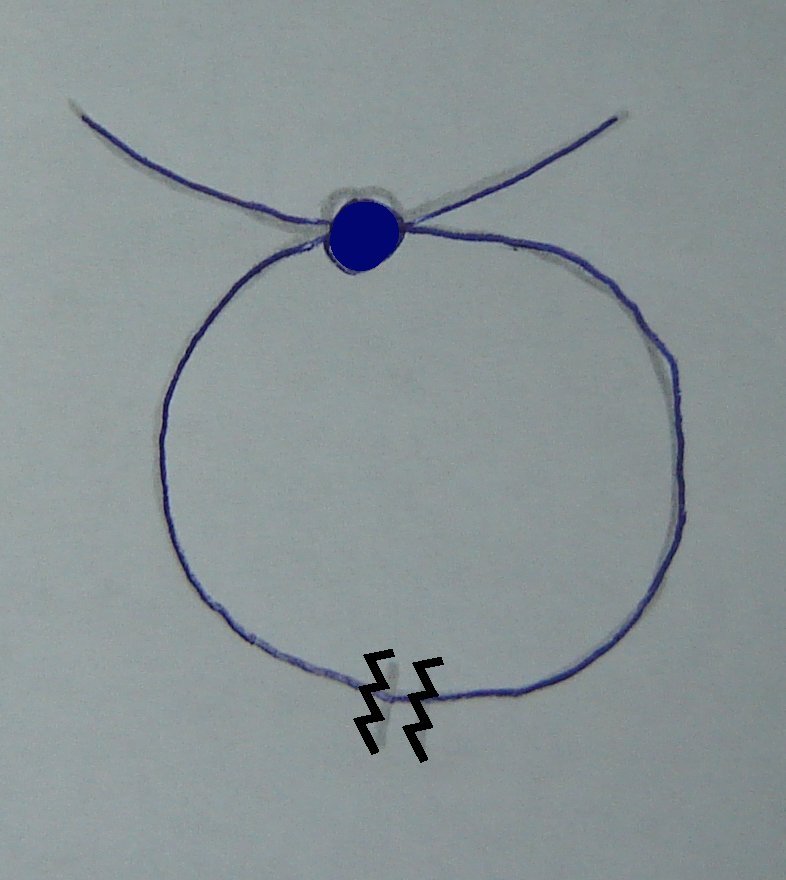The Double Helix -Glass Bead DNA Model V1.0
by ChrysN in Workshop > Science
24889 Views, 26 Favorites, 0 Comments
The Double Helix -Glass Bead DNA Model V1.0







DNA consists of two long polymers of nucleotides running anti-parallel, the strands are held together by hydrogen bonds between nucleotides (containing purines and pyrimidine bases). The nucleotides within each polymer or strand are held together by a phosphodiester bond forming the sugar-phosphate backbone.
DNA is often depicted in a simplified model with ribbons representing the sugar-phosphate backbone and and bars for the base pairs. In this instructable I will show you how to make a simplified model using coloured glass beads and thread (sorry no hydrogen bonds here). You can use them for decoration, hang them in a window, key chains, or a gift for your favorite molecular biologist.
I have another glass bead DNA model (V2.0) here.
DNA is often depicted in a simplified model with ribbons representing the sugar-phosphate backbone and and bars for the base pairs. In this instructable I will show you how to make a simplified model using coloured glass beads and thread (sorry no hydrogen bonds here). You can use them for decoration, hang them in a window, key chains, or a gift for your favorite molecular biologist.
I have another glass bead DNA model (V2.0) here.
Materials:


- Five different colours of seed beads (I used glass beads).
Choose a colour that matched the beads that you plan to use for the outer edges
(the sugar-phosphate backbone).
- A sturdy twist tie, or wire.
-2 needles to thread beads.
-Scissors for cutting thread/knife for stripping twist tie/wire.
- one colour makes up the sugar-phosphate backbone.
- four colours for the bases, pair up the colours so that they always appear together. (eg red-blue, green-yellow).
Choose a colour that matched the beads that you plan to use for the outer edges
(the sugar-phosphate backbone).
- A sturdy twist tie, or wire.
-2 needles to thread beads.
-Scissors for cutting thread/knife for stripping twist tie/wire.
The First Bead -getting Started






- The first bead will be the colour of the sugar-phosphate backbone.
- Thread one end of the string through the first bead, pull it through until it is in the middle of the thread. (see images below)
- Take the other end of the string and thread it through the bead in the opposite direction.
- Pull ends taut.
The Second Row of Beads






- The second row consists of 3 beads, the outer two is the same as in the previous step, the middle bead is any one of the colours you chose for the base pairs (I used green).
- Thread one end of the string through the next three beads, pull it through until they are in the middle of the thread. (see images below)
- Take the other end of the string and thread it through the beads in the opposite direction.
- Pull ends taut.
The Third Row




Are you getting the picture, I'll go over it one more time.
- The third row has 4 beads, the outer two beads are the same as the first bead (in step 2) and the two inner beads are different colours (I used red and blue). These colours will be matching base pairs.
- Thread one end of the string through the four beads, pull it through until they are in the middle of the thread. (see images below)
- Take the other end of the string and thread it through the beads in the opposite direction.
- Pull ends taut.
Continue On....



Continue adding more rows of beads using the pattern below, for a total of 28 rows (28bp). There are 20 rows of 6 beads with 4 rows tapering to one bead on either end. You can make it longer if you like provided that you have a long enough wire (see next step).
The colour pattern is just a suggestion, feel free to play around with the colours, just make sure you keep your base pair colours together.
You can have fun with this by assigning the colours a specific nucleotide (eg. red=Guanine, blue=Cytosine, yellow=Adenine, green=Thymine). Make your favorite amino acids, use TTAGGG repeats and call it a telomere, or copy a gene sequence (although the average human gene is 3000bp this is probably not a good idea).
The colour pattern is just a suggestion, feel free to play around with the colours, just make sure you keep your base pair colours together.
You can have fun with this by assigning the colours a specific nucleotide (eg. red=Guanine, blue=Cytosine, yellow=Adenine, green=Thymine). Make your favorite amino acids, use TTAGGG repeats and call it a telomere, or copy a gene sequence (although the average human gene is 3000bp this is probably not a good idea).
Making the Helix







- Use wire or a sturdy twist tie.
- Strip the plastic coating of of the wire/twist tie.
- Weave the wire through the rows of beads (under one row, over the next row etc.)
- Hook the ends of the wire into each of the ends bead and wrap securley around the end beads (you may need to cut the wire to the right size).
- Holding either end of the DNA, bend and twist to form a helix shape. (sorry I don't have pictures of this, both hands were busy bending and twisting). You need to include bending (not just twisting) or the DNA will slide back straight.